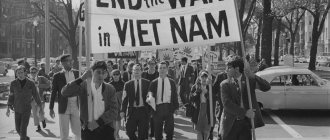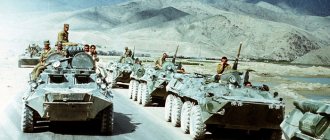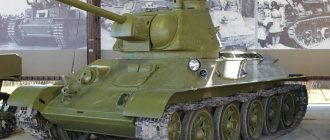The Caribbean crisis is a period of military and diplomatic confrontation between the United States and the USSR with the use of missiles. This conflict is also called the October or Cuban Missile Crisis. The event put the entire world in the face of nuclear war, but ultimately had a great impact on how to resolve controversial political situations.
Scheme of Soviet missiles targeting targets
Liberty Island
For hundreds of years, Cuba, discovered by Christopher Columbus in October 1492, was a stronghold of the Spanish crown in the New World.
After the Spanish-American War in 1898, the island officially became an independent state, however, falling under the strong influence of the United States. In the 1950s Cuba was under the rule of dictator Fulgencio Batista. Dissatisfaction with the dictator's rule led to the start of guerrilla warfare in December 1956. The leader of the uprising was the young and not yet world-famous lawyer Fidel Castro. After a long struggle, in January 1959 the rebels entered the capital of the republic, Havana.
Fidel Castro, who became Cuba's leader, understood the need to secure the support of the United States. However, the stumbling block between the two states was agrarian reform. Cuban land, previously owned by American companies, became state property. The Democratic Party led by President John Kennedy, which came to power in the United States, was also dissatisfied with the persecution of supporters of the former regime by Castro.
The confrontation between the two countries resulted in an attempt by the United States (with the help of Cuban immigrants) to overthrow the revolutionary government. The Battle of the Bay of Pigs, which took place in April 1961, ended in defeat for American forces. Castro, realizing the impossibility of constantly resisting such a strong state, turned to the main enemy of the United States for help.
U-2 flights
American reconnaissance aircraft flew on such planes. At the end of August, the photo showed the first positions with USSR anti-aircraft guns. On September 4, Kennedy made a statement that there were no offensive missiles in Cuba. Until September, American intelligence officers made 2 sorties a month, but on the 5th Kennedy banned reconnaissance operations. There were several reasons:
- Bad weather that did not allow normal flying.
- Fear of a war that could break out if even one US plane is shot down.
Flights were resumed on October 14. The first flight was carried out by Richard Heiser, who began reconnaissance at 3 am. He flew to Cuba for 4 hours. After the flight, the tape with the recording was handed over to the CIA. It clearly showed that there were many medium-range missiles in Cuba. The President was informed on the morning of October 16. A decree was issued to increase the frequency of reconnaissance flights. Now they were carried out 6 times a day.
Cold War
The end of the Second World War gave rise to a new stage in the history of the 20th century. Since 1945, the world has been divided into two parts, each of which was under the influence of a superpower. On the one hand, there is the United States, which sought to introduce the ideas of democracy to other countries, as well as to contribute to the preservation and development of the capitalist principle in them. On the other side is the USSR, a socialist state that sought to strengthen the ideas of social and economic equality in different parts of the world.
The confrontation between the capitalist and communist systems, which lasted for half a century, is commonly called the “Cold War”. The clash between the USA and the USSR led to crises on various continents: be it the Korean War (1950-1953) or the issue of the division of Berlin (1961). However, both powers tried in every possible way to avoid direct armed conflict. The reason for this was the emergence of extremely powerful weapons in the United States and the Soviet Union.
General history. 9th grade. Textbook.
The textbook continues the course of general history, covering the period from the end of the First World War to the present. The combination of regional and problem approaches allows us to see how events in individual countries influenced the course of global development. The historical process is presented in the textbook as a natural movement of society along the path of globalization, the growth of interconnectedness and interdependence of the countries of the world. The textbook promotes in-depth study of the subject.
Buy
The role of individuals and lessons learned
Humanity, having been on the edge of the nuclear abyss, successfully avoided the third world war. Of particular interest in this was the role of Kennedy and Khrushchev, the main leaders in the Cuban missile crisis, who managed to overcome ideological differences and agree to mutual concessions. The researchers concluded that both leaders (each in their own way) tried in every possible way to ease tensions and prevent the conflict from getting out of control. On the other hand, they had every reason to be afraid, since they realized that none of them had complete control over the course of events.
The lessons of the conflict in the Caribbean have not lost their relevance today. Surprisingly, it is the presence of nuclear weapons that allows the Earth to have some kind of peace. We can only hope that people's need for self-preservation is great enough not to succumb to the temptation of a nuclear adventure. International relations have always been saturated with contradictions, so conflicts have occurred in the past and will continue in the future. And it would be wiser not to turn a blind eye to their presence and not to try to get rid of them with the “red button”, but to learn to somehow control, soften and regulate.
Nuclear race
It was not by chance that the Cold War received such a name. One of its most important parts was the arms race. The fundamental task of the USA and the USSR was to overtake the enemy in creating more advanced weapons.
In 1945, American scientists successfully tested the first atomic bomb in history. The emergence of weapons of devastating power immediately contributed to the emergence of the United States as a leading world power. The USSR had to respond to the challenge of the United States, and in 1949 the first Soviet atomic bomb was tested.
Soon the countries faced the question of how to deliver new weapons. The efforts of both states were aimed at developing rocket science. Appeared in the 1950s. intercontinental missiles allowed the United States and the USSR to strike the enemy in the shortest possible time.
Both powers sought to use their military power to contain each other. Taking advantage of close ties with Turkey, the United States placed its missiles on the territory of the union state in close proximity to the borders of the USSR. In response to this, Soviet leader N.S. Khrushchev decided to send nuclear warheads to Cuba. The placement of the missiles was supposed to balance the enemy forces, and at the same time secure Liberty Island from a possible invasion.
1961 intervention
John Kennedy, who assumed the presidency of the United States at the end of 1960, did not approve of the policy of aggressive measures against Cuba. However, having received some misinformation from the intelligence services, he gave the go-ahead for American troops to land on the island. There is information that he rejected the operation a couple of days later, but this did not prevent the CIA from canceling its invasion of Cuba.
On April 17, 1961, trained extremists landed on the southern coast of the island (the Playa Giron area), but unexpectedly encountered resistance from the local armed forces, who kept vigilant control of their territories. The carefully planned operation ended in complete failure: within 72 hours, the American landing party was defeated, and a significant part of it was captured. This invasion was only a prelude to the chain of hostilities that led to the Cuban Missile Crisis of 1962.
Causes of the Cuban Missile Crisis
As a result, we can identify the following reasons for the outbreak of the Caribbean or, as it is also called, the Cuban crisis in 1962:
- Cold War. The impossibility of a direct collision between the USA and the USSR led both powers to struggle for influence in certain parts of the globe. Cuba has become another front of confrontation between two systems.
- Consequences of the Cuban Revolution. Land reform and the persecution of US supporters in Cuba led the United States to attempt to overthrow Castro's rule. Cuba was forced to turn to the USSR for help.
- Arms race. The deployment of missiles in Turkey became the reason for the Soviet leadership to send their own missiles to Liberty Island.
Operation Mongoose
The unsuccessful invasion of Cuba significantly damaged the reputation of the superpower; the White House became even more determined in its desire to curb the rebellious Island of Liberty. Five months later, Kennedy approved a plan for sabotage operations codenamed “Mongoose.” The developed project outlined sabotage, espionage, subversive propaganda and the intervention of American military forces to carry out a popular uprising in the republic. The operation was entrusted to a group of CIA security forces (Special Forces Detachment W), under the leadership of William Harvey.
As the history of the Cuban Missile Crisis showed, the CIA miscalculated its plans, since all their calculations were based on the fact that the Cubans wanted to get rid of the existing power of Castro and they just needed a push. In fact, it turned out that the residents of the republic had a completely different opinion. However, a more significant reason that led to the failure of the Washington project was the installation of the nuclear potential of the Soviet Union on the territory of the island, which posed a clear threat to the United States.
October
For a long time, the American leadership did not have information about the Soviet missiles deployed in Cuba. However, on October 14, a U.S. U-2 reconnaissance aircraft flying over the island was able to take photographs of the missile launchers. Two days later, these photographs were presented to US President John Kennedy.
The situation in Washington is difficult. The entire US leadership agreed on one thing: it was necessary to ensure that the USSR removed its missiles from the island. The question, however, was how to do this. American hawkish politicians proposed launching a military strike against Cuba. The “Doves” tried in every possible way to avoid a direct military conflict, calling for a compromise to be found with the Soviet Union.
On October 22, J. Kennedy addressed the American people. The President announced the deployment of Soviet missiles in Cuba. In order to prevent further strengthening of Soviet forces on the island, the United States imposed a naval blockade of Cuba, which the Americans themselves called “quarantine.” The United States Navy prevented any ships from the USSR from entering the island. At the same time, Soviet ships were heading to Cuba. Any collision between the American fleet and the Soviet fleet could be the reason for the start of a conflict.
The most difficult day of the entire Cuban Missile Crisis was “Black Saturday” - October 27th. An American U-2 spy plane was shot down over Cuba. The death of the pilot could have been the reason for the American leadership to start hostilities. The world was on the verge of a nuclear disaster.
General history. Recent history. 9th grade. Textbook.
The textbook is included in the educational and methodological complex on general history for grade 9. Based on modern scientific approaches, it highlights the most important events in the political, economic and spiritual life of society in the 20th - early 21st centuries. The textbook's methodological apparatus includes a variety of questions and assignments, author's maps and documentary materials, bright and imaginative illustrations that will allow students to learn the basic facts and concepts of the course. The textbook fully complies with the Federal State Educational Standard for Basic General Education, is labeled “Recommended” and is included in the Federal List.
Buy
Conflict resolution.
Having learned about the presence of Soviet nuclear forces in Cuba, the US leadership decided to establish a naval blockade around Cuba. True, oddly enough, there was a hitch with the legality of such an act - after all, Soviet missiles did not formally violate international law, while the imposition of a blockade was considered a direct declaration of war.
Therefore, it was decided to call the blockade a “quarantine” and cut off sea communications not entirely and completely, but only in terms of weapons.
Diplomatic negotiations, during which the whole world was in suspense, lasted a week.
As a result, the parties agreed on the following:
- The USSR withdraws its forces from Cuba;
- The US removes missiles from Turkey and abandons attempts to invade Cuba.











